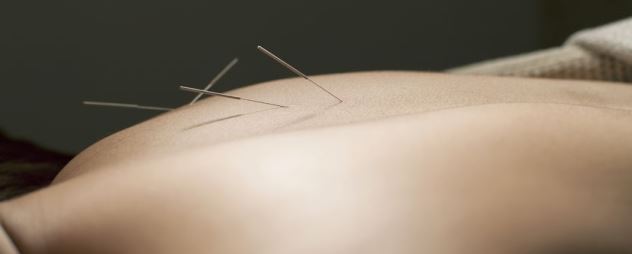Recurrent Implantation Failure (RIF) is the repeated failure of an embryo to implant in the uterus of a healthy woman of childbearing age. Traditional Chinese Medicine is thought to play a useful role in such situations as well as in the event of a threatened miscarriage. Unfortunately, in many cases, there is little that can be done if a miscarriage is inevitable but in some cases, where there are deficiencies with certain lifestyle factors of the mother, then timely treatment may assist maintain a pregnancy.
Recurrent Implantation Failure Causes
First, let’s look at some of the causes of RIF
- Embryo Quality
If the quality of the Embryo is compromised due to alterations in the number of chromosomes, if the shell surrounding the embryo is thin, of in instances where the cells that are developing in the embryo itself are irregular or when there is a significant degree of cell debris around the embryo (known as fragmentation) it is thought that implantation could be compromised.
- Thin Endometrium
The endometrium is the lining of the uterus (womb) that grows each month in preparation for a pregnant and then sheds if a pregnancy is not established. During the follicular phase (Days 1-14) of the menstrual cycle, the endometrium of a woman’s uterus thickens. Most health care professionals are looking for a uterine lining to be greater than 8mm when a patient is having fertility treatment, however optimal would be considered 11-12 millimetres. A Thin Endometrium can be caused by a hormonal problem or fibroids in the wall of the uterus and if the lining of the uterus is too thin it does not provide a place for the embryo to successfully implant and develop.
- Uterine Scarring
Scaring left by a previous surgery may result in the development of adhesions in the pelvic cavity and/or uterus. Another form of scarring that can occur is referred to as Asherman’s syndrome. In this instance the uterus does not develop an emdometrium uniformly and some aspects of the uterus can adhere to each other. Another instance when there can be uterine scaring is if Adenomyosis is present. This is said to be present when there is an overgrowth of the endometrium that should have been excreted during the menstrual cycle which becomes embedded in the uterine muscle. The old tissue and blood is unable to flow out of the cervix causing pain and abnormal uterine bleeding.
Traditional Chinese Methods of Diagnosing Causes Of RIF
Traditional Chinese medical practitioners consider a holistic approach that looks at the overall health of a person. The practitioner gains information from their client by asking various questions about specifics such as energy levels, sleep patterns, temperature of the body (including a Basal Body temperature chart), digestion and elimination as well ask asking about the patient’s moods or emotions. The pulse is also assessed for quality that is if it is full, empty, wiry or slippery. In addition to the pulse the traditional Chinese medicine practitioner will also look at a client’s tongue to assess the colour, moisture and shape as well as observing if there are any abnormalities present. This total assessment will provide the traditional Chinese Medical practitioner’s with a diagnosis thus, giving a pattern differentiation of the patient.
During the initial assessment, a qualified practitioner will also ask about previous fertility treatments including the number of eggs that were retrieved and then successfully fertilized, how many embryos were transferred and whether or not an suitable embryos were frozen.
How Acupuncture Is Administered To Assist With Cases Of RIF
In cases where Embryo Quality is considered to be an issue, TCM practitioners would look at this as someone having Kidney Yin Deficiency. The follicular phase (Days 1-14) of the menstrual cycle is governed by what is known as Kidney Yin and therefore, if problems with egg and embryo quality are identified it is thought to be associated with Kidney yin deficiency. Other signs and symptoms of kidney yin deficiency may be characterised by Heat signs such as hot flushes, dry mouth, night sweats, thirst at night, short or early menstruation or even a light coloured flow.
When a patient presents with a history of a continuously thin endometrium, this is thought to be associated with a Liver and Spleen blood deficiency. A normal menstrual flow usually correlates with someone having thick endometrial lining. If menstrual bleeding is light or cut short, this is can be an indication of Liver and Spleen blood deficiency. Other signs and symptoms of a liver and spleen issue are no periods, late periods, dizziness, insomnia, blurred vision, tingling limbs, dry skin, hair and nails.
Uterine Scarring can be associated with scanty or absent periods which may or may not be painful. When patients present with these symptoms a TCM practitioner would consider Liver Qi Stagnation. Other signs and symptoms associated with Liver Qi Stagnation are Pre-menstrual tension, Breast tenderness, bloating, Irritability or depression.
By administering acupuncture at specific point locations as well as supplementing the patient with specific herbal formulas based on the findings from the assessment, a skilled TCM practitioner may be able to assist with Assisted Reproductive Technology by bringing harmony and balance back within the body.
Note: Herbs are used during a fertility treatment cycle should be used very cautiously and as a last resort. The herbs can however, may make a difference in some cases with patients showing a more positive response to medications, reduced treatment side effects and, more importantly an increase in uterine blood flow which may assist in a successful implantation.
For more information, contact Erica French (B.Hsc. Acupuncture) at Cycle of Life Acupuncture or visit her website at www.cycleoflifeacupuncture.com.au
References:
Claudio Benadive, MD (2003) “Recurrent IVF failure: is third party reproduction the only option?”
Giovanni Maciocia, (2004) “Obstetrics & Gynecology in Chinese Medicine”
Jane Lyttleton, (2004) “Treatment of Infertility with Chinese Medicine”
Jason Jackson (2009) “Making Babies – The definitive guide to improving your fertility and reproductive health”

